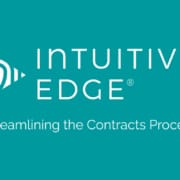The $75 Million Oversight: The Imperative of Contract Due Diligence in M&A
 In the complex and high-stakes realm of mergers and acquisitions (M&A), the devil truly lies in the details—specifically, within the dense text of contracts. The tale of the Columbus acquisition serves as a stark reminder of this truth, where excitement and oversight led to a staggering $75 million loss, all due to neglected customer agreements with burdensome rebates and unfavorable pricing terms. This incident underscores a crucial lesson: comprehensive contract due diligence is not just beneficial; it’s essential.
In the complex and high-stakes realm of mergers and acquisitions (M&A), the devil truly lies in the details—specifically, within the dense text of contracts. The tale of the Columbus acquisition serves as a stark reminder of this truth, where excitement and oversight led to a staggering $75 million loss, all due to neglected customer agreements with burdensome rebates and unfavorable pricing terms. This incident underscores a crucial lesson: comprehensive contract due diligence is not just beneficial; it’s essential.
The Columbus Deal: A Cautionary Tale
The oversight of Columbus customer agreements—laden with costly rebates and restrictive pricing—was a critical error. These terms, overlooked during the deal negotiation phase, became painfully apparent post-acquisition, locking the new owners into financially detrimental agreements with no easy exits. This scenario, while distressing, is not unique in the world of M&A, where the failure to meticulously review and understand contracts can lead to unforeseen financial liabilities and strategic constraints.
The High Cost of Inattention
In the case of the Columbus deal, a hypothetical investment of $500k in thorough contract review and due diligence might have seemed steep at the outset. However, this investment pales in comparison to the $75 million loss incurred due to contractual oversights. More than a financial safeguard, this investment in due diligence would have provided a deep understanding of existing contractual obligations, enabling strategic decisions that could potentially have influenced the acquisition price itself, not to mention avoiding significant post-acquisition financial hemorrhage.
Leveraging Due Diligence for Strategic Advantage
Comprehensive contract due diligence offers more than just risk mitigation; it’s a strategic tool that can shape the entire trajectory of an acquisition. Understanding the nuances of every contract allows acquirers to:
- Identify potential liabilities that could affect the valuation of the deal.
- Negotiate better terms before closing, potentially saving millions.
- Strategically plan post-acquisition integration, aligning contractual obligations with business objectives and growth strategies.
Turning Tables: From Oversight to Insight
The Columbus debacle serves as a powerful lesson for M&A practitioners: due diligence, especially in contract review, should never be a mere surface formality. Instead, it should be viewed as a strategic exercise, an investment in the future success of the acquisition. By allocating resources—both financial and expertise—towards thorough contract analysis, businesses can transform potential pitfalls into strategic opportunities, ensuring that every contract not only aligns with but also enhances their post-acquisition strategy.
In Conclusion
The story of the Columbus acquisition’s $75 million mistake is a call to all involved in M&A to prioritize comprehensive contract due diligence. This process is not just about uncovering potential deal-breakers; it’s about investing in the future success and strategic alignment of the acquisition. Let the Columbus tale be a reminder of the importance of contracts in shaping the outcome of M&A deals, turning due diligence from a perfunctory task into a cornerstone of strategic M&A planning.




